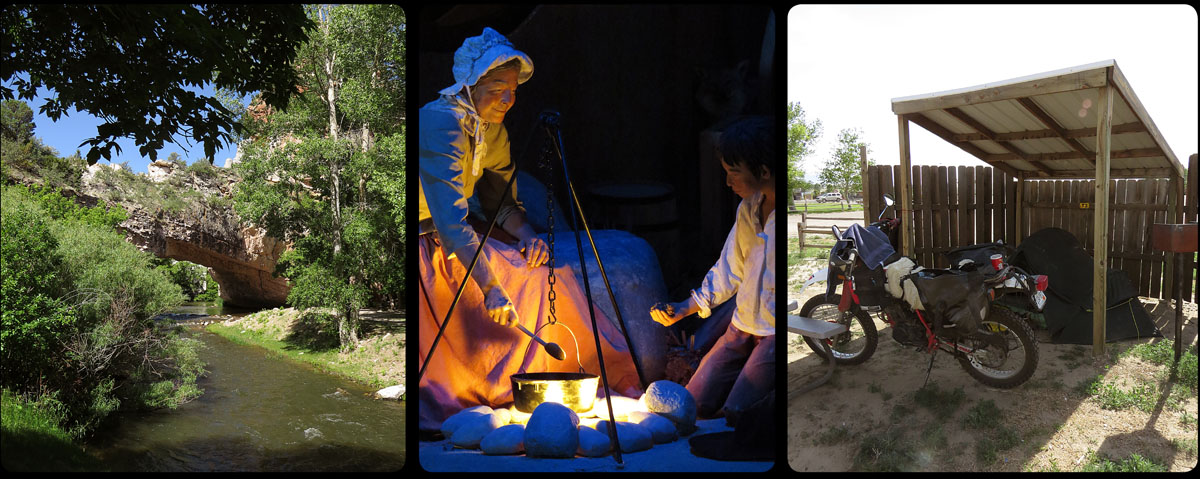Halfway the nineteenth century, the camping spot at Ayers Natural Bridge, carved out by the LaPrele Creek, was a beautiful spot, with clear water and shelter provided by many trees. Understandably, emigrants loved to camp here. Today it still is a lovely place. There is a campground now, where you can put up your tent on patches of soft grass, sheltered from the sun by trees and high cliffs. A small green oasis in the rough and bone-dry Wyoming land.
For the emigrants it wasn’t easy to find a suitable place to make camp every day. There had to be grass for the animals, wood to make a fire to cook on, and of course water, preferably of potable quality.
Where to stay every night on the long journey was explained in the many guidebooks that where printed for the emigrants. Unfortunately, the information in these books was often outdated by the time it reached the overlanders; it was possible that one year, because of many storms, there was plenty of water to be found at a certain spot, but in later years weary travelers would find only a dry river bed.
Finding a suitable camping spot wouldn’t just be the end of it. Wood had to be gathered, or, if this wasn’t available, so called buffalo chips (dried buffalo dung), nicknamed ‘bois de vache’. Camp had to be made, maybe some tents had to be put up. Somebody was charged with the task of collecting water, and the draft animals had to be looked after. Any broken, wagons or the gear of mules or oxen had to be repaired, and of course, a meal had to be prepared. This meant making dough, baking, preparing bacon and beans and making coffee (coffee beans first had to be roasted in a frying pan and subsequently ground).
If the weather was bad and they just couldn’t get the fire going, supper for the emigrants was limited to so called hardtack; extremely hard biscuits, supplemented maybe with some dried fruit or pickles.
And at the end of a long day, if the emigrants weren’t dead tired by then, there was time for some entertainment; music was made, usually accompanied by singing. Very often these late hours of the day were used by people to write their journals. It is amazing that so many kept this up faithfully for all these months.
My own camp for tonight unfortunately isn’t so heavenly as the one on the LaPrele Creek. I’m camped a little north of the town of Casper, on a sandy spot covered with weeds, which possibly once was a patch of grass.
There’s a very strong wind blowing that, accompanied by a temperature of about 95 degrees, feels like the air out of a warm hairdryer. As if to emphasize the harsh conditions, every now and then some tumbleweed comes rolling by.
I was allowed to put up my tent under a specially built wooden tent shelter, which is a good thing, otherwise I would probably have had to pick up it somewhere in Montana.
It’s hot, dry and windy. Welcome to Wyoming.

